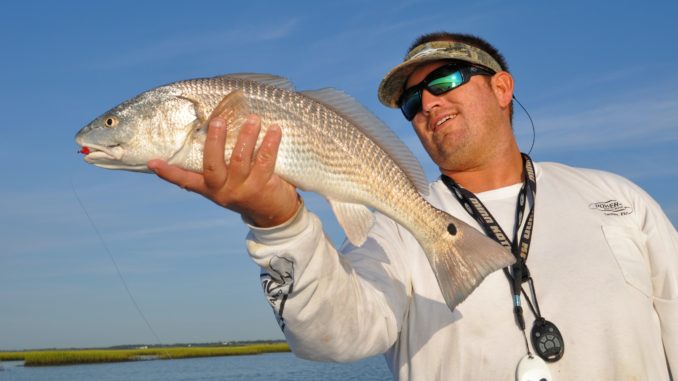
Stay shallow and pay attention to grass and oysters for best summer redfish action in Swansboro area.
The water in the creeks and bays behind Bear Island sparkled in the sunlight as Swansboro’s Robbie Hall cruised by in his bay boat.
A full-time fishing guide, Hall was looking for red drum in the shallow waters behind the island.
So many redfish make their homes in North Carolina’s coastal inland waters that it usually doesn’t take long for fishermen to locate them. Reds like to cruise in schools through open water or hug the sides of grass islands, looking for a meal.
“The reds used to not be here in the numbers they are now,” said Hall, 32, who has fished the region most of his life, the last seven years guiding for Hall ‘Em In Charters. “I’ve been a fisherman since I was five years old. I was taught to fish mainly by my uncles.
“When I was growing up, I don’t remember seeing the big schools of drum we have now. I especially don’t recall seeing them in the marshes like we do now.
“If you wanted to catch a drum 20 years ago, you waited until fall and went to the surf. You didn’t catch as many as you do now, but the fall surf reds were usually big ones. I recall once seeing one of my uncles scale a big drum with a garden rake.”
Hall credited the N.C. Division of Marine Fisheries for implementing rules about 20 years ago that relieved pressure on the state’s designated fish and allowed the population to rebound.
“If (NCDMF) did anything right, it was with red drum,” Hall said. “I can remember when the limit was five fish per day.”
Because red drum were so highly prized by recreational and commercial anglers alike, their numbers in North Carolina’s inshore waters began dropping in the 1980s. Gill nets took a large toll, along with the five-fish recreational creel limit.
Several changes in recreational creel limits — from five to three, then three to one, with an 18- to 27-inch slot limit — helped, as did regulations made them a non-targeted species for commercial fishermen.
The Red Drum Fisheries Management Plan was completed in 2009 and resulted in current regulations that basically have remained stable, except for a few tweaks.
The commercial fishery now is restricted to the same 18- to 27-inch slot limit, redfish can’t be netted on purpose, and reds caught incidentally while targeting other species with nets can’t outweigh the total of all other legally-netted species. The current rule also retains a 250,000-pound annual cap for all commercially-caught reds.
“Since the rules have changed, we’ve got plenty of red drum,” Hall said, “and it’s not just a winter beach fishery where you’re likely only to catch a big one now and then. Anglers can find red drum of all sizes in most inshore waters nearly all year.”
Hall remembers when anglers primarily used live or cut bait for red drum. One of the regulation changes restricts live and cut-bait recreational anglers to circle hooks with a leader of no more than six inches long, which probably saved thousands of redfish from damage to their internal organs and delayed mortality caused by traditional “J” hooks.
“I think one of the reasons we have drum of all sizes now and they’re so eager to bite is the rules have re-populated inshore stocks, and drum put a lot of pressure on baitfish,” Hall said. “Back in the old days, you didn’t see many flats boats and pole boats with anglers throwing artificial lures for red drum. If you wanted to fish for drum, you waited for a full moon and went to the beaches. But now just about everybody who isn’t surf fishing uses a boat. People fish for drum now all year long.”
Hall, who also works part-time at Emerald Isle’s Reel Outdoors Tackle Shop, said another reason for the drum explosion is inshore waters contain perfect habitat for these fish.
“Most of North Carolina is really suited for red drum,” he said. “You’ve got a lot of islands protecting the mainland up and down the coast, and a lot of that water is behind inlets such as Bogue, Bear and Browns that cover thousands of acres of bays and creeks. It’s a lot like Louisiana, and I think sometimes we’ve got red drum fishing that’s better than that state.”
During winter, when inside waters sometimes become too cold for red drum, they school in the clear waters just beyond the breakers and become targets for anglers on calm days.
“It’s not odd at all to see redfish schools of 400 to 500 fish in the surf in winter,” Hall said. “Then, when the water warms up like it does in June, those fish follow the baitfish back inside (the inlets).”
From what he’s seen while fishing in red drum tournaments in other areas of the coast, he’s even more convinced North Carolina’s red drum population can compete with any on the East Coast, especially in the waters around Swansboro.
“Everywhere you go, it’s not like that,” he said. “I’ve fished drum tournaments from Salter Path to New River Inlet, and this area is the best for sheer numbers of 22- to 30-inch fish I’ve ever seen. It’s definitely the best in the state.”
Hall said fishermen are likely to find a summertime blend of reds of all sizes, from small to medium to over-slot. That’s not to say reds of different sizes hang out together in schools; rather, it’s just the opposite. Redfish tend to school by size, but summer schools are smaller than in the winter when they move into bays, coves and creeks. Hall believes an angler on the move is likely to encounter many sizes of reds in a day’s time.
“You might pick up a fish or two of one size, then stumble into a school of 100 drum or more of bigger sizes or smaller sizes,” said Hall, who feel that fish in schools scatter once they head back inshore each spring, then regroup in schools of similar-sized fish because of the availability of finger mullet — they use their numbers to corral baitfish. “When the finger mullet go inside, that spreads out the reds into schools of similar-size fish that look for the mullet.”
Hall said that topwater action heats up along with the weather, and he has several favorite lures.
“I like to throw the Rapala Gold Mullet Skitterwalk with a black back,” he said. “The regular Skitterwalk Mullet has only gold sides.”
However, the Gold Mullet works well, he said, because most live mullets have reached a good size by summertime.
In addition to Skitterwalks, Hall also uses Zara Spooks, Top Dogs and Top Pups.
“It all depends on what the reds like that day,” he said.
One of his favorite TopDog color schemes includes a black body with a chartreuse or green head.
His basic fishing equipment includes 7-foot Fenwick Eagle GT rods fitted to Fin Nor FS 3000 to 4000 Series reels spooled with 20-pound Power Braid.
The braid is useful because Hall can’t be sure what will happen when he’s casting near a shoreline that has marsh grass and oyster beds. Often, a hooked red will surge or take enough drag to bury itself in the grass stems or pull line across razor-sharp oyster shells. The plants’ sharp edges and oysters can make short work of monofilament, but braid is much tougher. Hall also uses two feet of a tough, 25-pound fluorocarbon leader he ties to the braid with an Albright knot.
“Fluorocarbon that big will handle marsh grass and oysters,” he said. “It’s tough.”
When the topwater bite peters out, Hall turns to sub-surface or bottom-bumping lures.
“Of course, reds will eat just about anything. They especially like those little black mole crabs that burrow inside oyster rocks,” Hall said. “That’s why lures that imitate little crabs are good at oyster beds.”
But reds also will eat other baits and especially are fond of live shrimp and finger mullet.
“The 4-inch Gulp! shrimp in natural or pearl color on a 1/8-ounce jighead is a really good lure,” said Hall, who uses a gold Johnson Spoon as a search bait.
“It’s really effective at finding fish when the tide is high and they may be in the grass,” he said. “A (weedless) spoon comes through that stuff.”
When he has clients who are novices at handling artificial lures, Hall sticks to a tried-and-true method: live or cut bait in fairly open water.
“I’ll use a Carolina rig with a 3/4-ounce egg sinker and a live shrimp or mullet; I’d rather have a mullet than a pinfish because of a pinfish’s spines,” he said. “Sometimes, I’ll also use natural baits underneath a popping cork.”
One of his favorite tackles with clients who are unskilled in casting and retrieving is to head for a bay he knows holds reds.
“What I do is set up four or five rods with Carolina rigs or popping corks, get in a flooded area and just put the baits out at a corner of a bay,” he said. “It’s not the most fun way to fish, but it is effective.”
Hall said a good day would include 10 to 14 red drum, but sometimes a group of anglers will hit the mother lode and catch many more.
DESTINATION INFORMATION
HOW TO GET THERE/WHEN TO GO — FIshing for red drum is best from May through November in the Swansboro area. The get there, follow US 17 north from the Wilmington area to Jacksonville, then go east on NC 24 to Swansboro. From points west, take I-40 south from Raleigh, then east at NC 24 to Jacksonville and Swansboro. From the north, take US 17 south from New Bern to Maysville, then follow NC 58 south to Cape Carteret. Go southwest on NC 24 and cross the White Oak River to reach Swansboro.
TACKLE/TECHNIQUES — A good combo for reds is a 7-foot medium-action spinning outfit spooled with 20-pound Power Braid and a 2 ½-foot leader of 25-pound fluorocarbon. Soft-plastics and topwater baits are productive, including 4-inch Gulp! shrimp, Rapala Gold Mullet Skitterwalk, Zara Spooks, TopDogs and TopPups. Live bait can be fished on a Carolina rig with a ¾-ounce egg sinker, 2 ½ feet of fluorocarbon leader and a No. 4 hook, or under a popping cork.
FISHING INFO/GUIDES — Robbie Hall, Hall ‘Em In Charters, 910-330-6999, www.hallemincharters.com; Rick Patterson, Cape Crusader Charters, 252-342-1513, www.capecrusadercharters.com; Ricky Kellum, The Speckled Specialist, www.speckledspecialist.com, 910-330-2745; Capt. Jot Owens, Jot It Down Fishing Charters, 910-233-4139. www.captainjot.com; Reel Outdoors Tackle Shop, Emerald Isle, 252-354-6692; Dudley’s Marina, Swansboro, 252-393-2204. See also Guides & Charters in Classifieds.
ACCOMMODATIONS — Swansboro Chamber of Commerce, 910-326-1174, www.swansborochamber.org.
MAPS — Capt. Segull’s Nautical Charts, 888-473-4855, www.captainsegullcharts.com; Sealake Fishing Guides, 800-411-0185, www.thegoodspots.com; Grease Chart, 800-326-3567, www.greasechart.com.

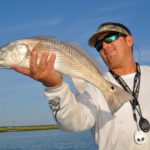
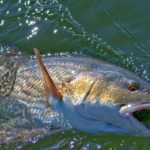
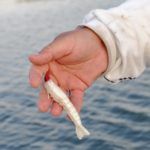
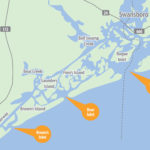

Be the first to comment